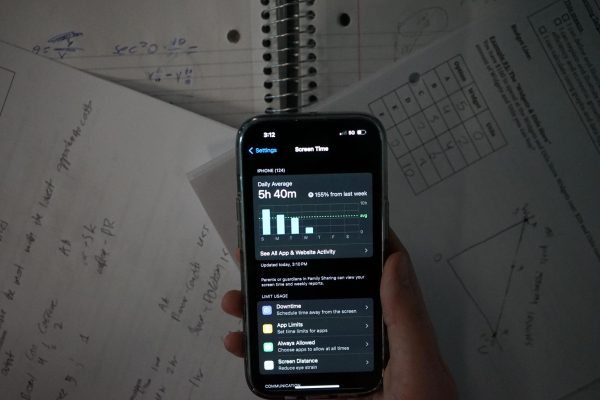Young investors trade amidst the uncertain “COVID Market”

In May of 2020, Robinhood CEO Vlad Tenev reported that the brokerage had registered over 3 million new accounts since the beginning of the year in 2020. Why? Well, the biggest reason would be young investors flocking toward once-in-a-lifetime opportunities with high upside, low downside and minimal risk.
Unprecedented levels of interest amongst teens were, in part, caused by the effects of the COVID-19 pandemic on stock prices. This was a rare opportunity to buy historically bullish stocks at an extremely discounted price.
In Jan. of 2017, the DJIA was priced at about 19,000 points. Since then, it has increased steadily, sitting at a pre-pandemic high of 29,398 points on Feb. 14, 2020. By March 20, it had crashed down to 19,000 points once again. Investors saw this as a chance to buy in and ride the bullish wave back up—netting large profits. For reference, the DJIA today sits at 31,458, a 66% gain since March of 2020.
Keshav Trikha (12) recalled his first days investing in the stock market.
“I started at the beginning of quarantine. I had a lot of free time, and I was hearing that it was a good time to buy. So, I used the money I made from my job [into stocks] so I could learn how to build wealth before college,” Trikha said.
A hurdle often faced by teen investors is actually finding the stocks.
“I usually find stocks on trading sites like Benzinga or Finviz by using technical analysis tools,” Trikha said.
Often, according to Trikha, investors will use many different investment strategies depending on their goals.
“I first try to identify a growing industry. Then, I often look for an ETF because they tend to be more stable,” Gavin Gilfand said (12).
What Gilfand hints at, managing risk through ETFs, is another crucial part of buying stocks.
Prem Nair (12) shared similar thoughts.
“You’ve got to balance your portfolio. We’re at the perfect age to buy stocks with more risk, but it’s always important to secure your profits in blue chips or ETFs,” Nair said
Teens have a lot of years to make back the money they’ve lost, making it easier for them to participate in higher-risk investing.
Mr. Sean Crevier, the Personal Finance teacher and head of the Stock Market Club, commented on the risks attributed to investing.
“[It] is all about comfort level and affordability. So, you have to be comfortable with the risks that you’re taking and that means accepting that you may lose,” Mr. Crevier said.
Nair also said that many teen investors are detached from risk management. The recent “Short Squeezes” on GameStop and AMC led many informed investors to rake in profits at the expense of new investors.
Attributed to r/WallStreetBets—a stock subreddit with primarily teenage users—these Squeezes are proof that young investors have more power than ever before in the market. With brokerages like Robinhood, Webull and TD Ameritrade skyrocketing in popularity among teens, the mindset of investing being for the old and wealthy is gradually diminishing.
As new waves of thinking come into the market, it is important that teenage investors do their due diligence to remain educated, responsibly manage risk and invest in what they believe in.
Glossary
Bearish: Associated with falling share prices
Bullish: Associated with rising share prices
Blue Chip Stocks: Shares of a corporation with a national reputation for reliability in good and bad market environments (eg: Apple, Microsoft)
DJIA: The Dow Jones Industrial Average measures the stock performance of 30 largest industrial companies in the United States.
Brokerage: An intermediary that connects buyers and sellers (eg: Robinhood)
ETF: An asset that combines various securities in a particular sector (eg: Semiconductors)
Short Squeeze: When a stock that traders had bet would fall jumps extremely high










